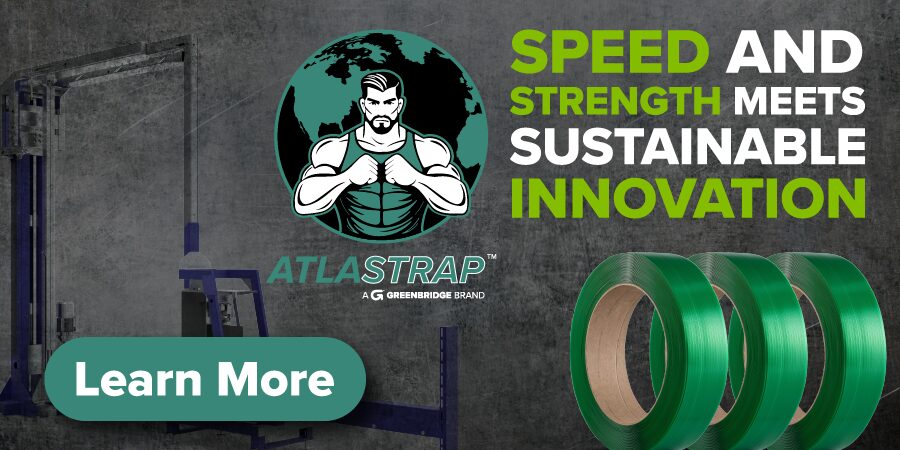
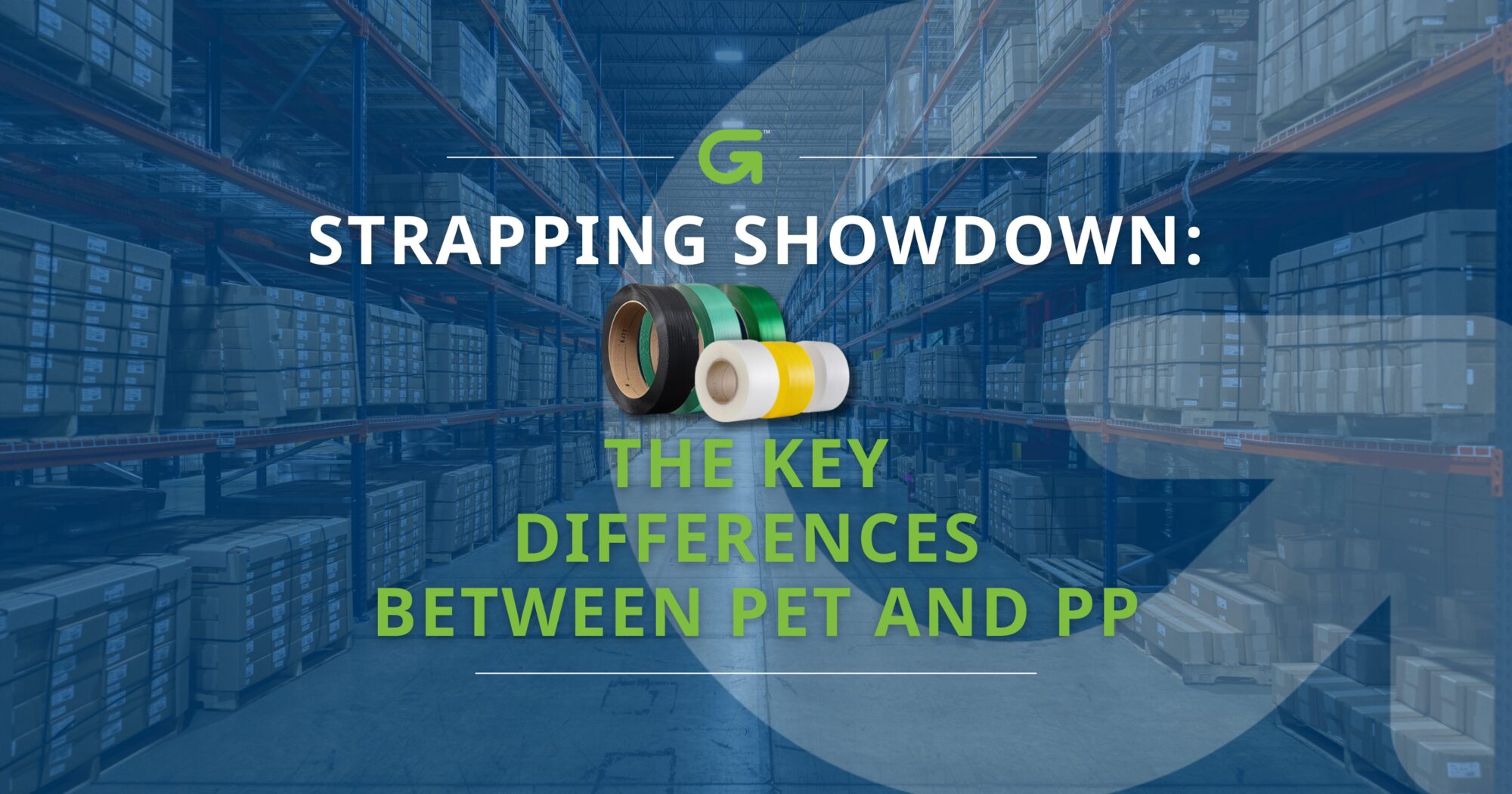
Strapping Showdown: The Key Differences Between PET and PP
When it comes to securing products for storage or shipment, strapping is one of the most reliable and cost-effective packaging solutions available. But not all strapping is created equal. For many businesses, the choice often comes down to two of the most commonly used plastic strapping materials: polyester (PET) and polypropylene (PP).
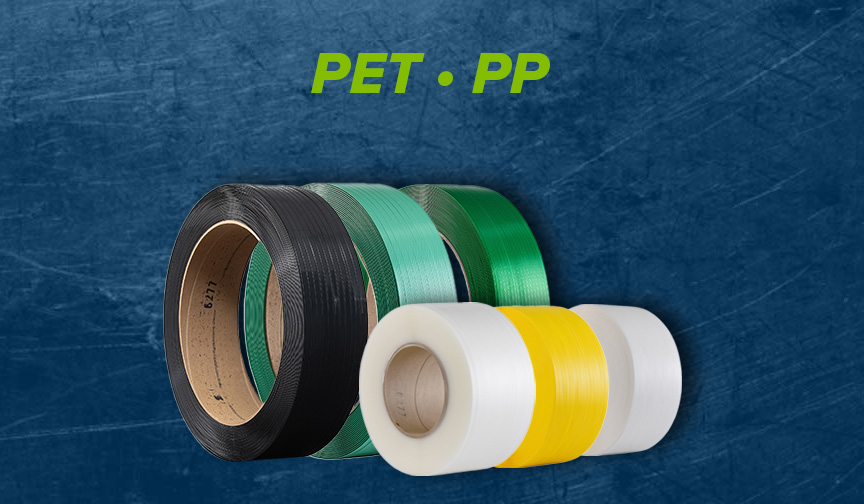
While they may look similar at first glance, these materials perform differently under pressure—literally. The right choice can improve load stability, reduce product damage, increase safety, and even impact your bottom line.
So, how do you know which one is right for your operation?
Let’s break it down.
Polypropylene Strapping: Lightweight & Economical
Polypropylene strapping is a popular choice for light- to medium-duty applications. It’s made from thermoplastic polymer resin, which gives it a combination of flexibility and strength—ideal for bundling, unitizing, and palletizing lightweight items.
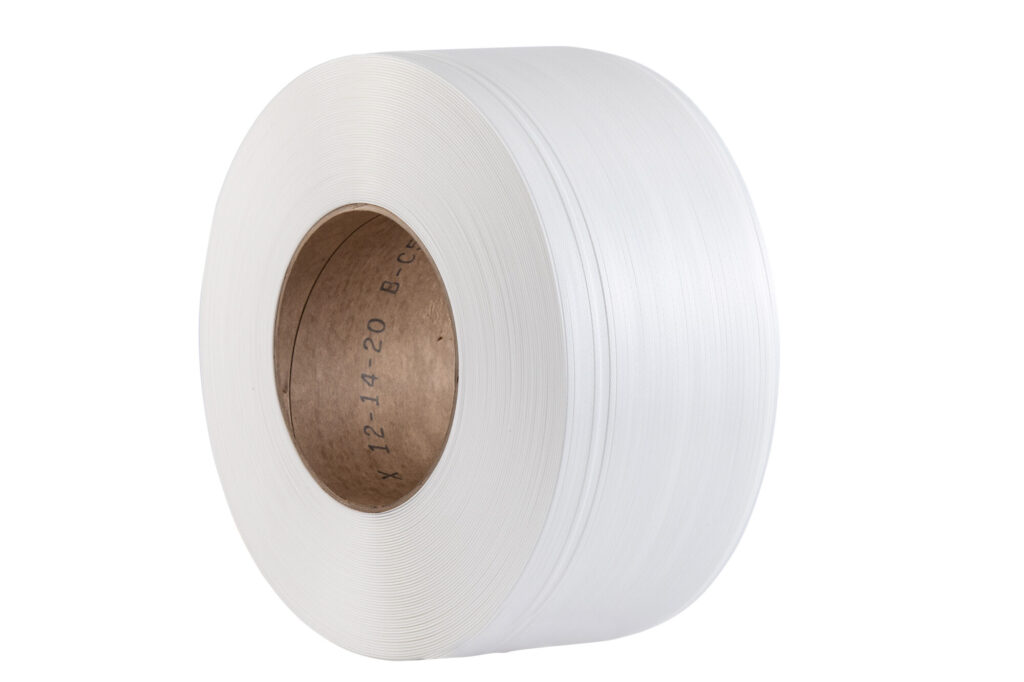
Key Features:
Low retained tension: Tends to lose tension over time, making it better for short-term applications.
Cost-effective: Often the most budget-friendly strapping option.
Flexible: Ideal for irregularly shaped packages or soft goods.
Lightweight: Easy to handle and apply.
Good elongation: Can stretch to accommodate minor load shifts.
Common Use Cases:
- Sealing cartons and corrugated boxes
- Bundling newspapers or printed materials
- Packaging lighter consumer goods
- Palletizing plastic containers, trays, or lightweight products
Polypropylene is a great fit when you need to keep costs low and don’t require high tensile strength or long-term tension retention. If your product is relatively lightweight and doesn’t experience a lot of shifting in transit, PP could be your go-to.
Polyester Strapping: High Strength for Heavy Loads
Polyester strapping (PET) is often considered the best plastic strapping alternative to steel. It combines high tensile strength with excellent elongation recovery, making it ideal for securing heavier or more rigid loads.
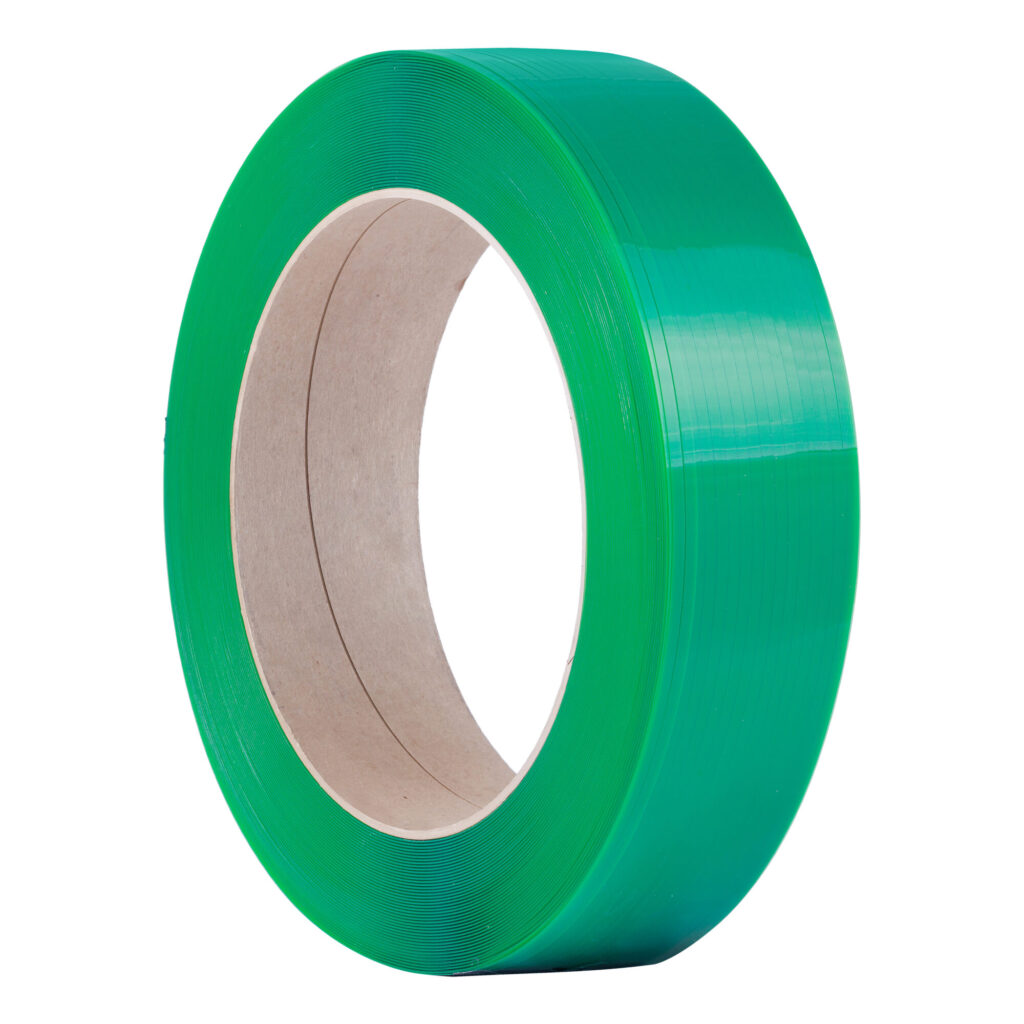
Key Features:
Steel replacement: Safer and more cost-effective than steel in many applications.
Superior strength: High break strength and resistance to tearing.
High tension retention: Maintains tension over time—even in changing temperatures.
Resistant to UV and moisture: Better durability for outdoor storage or shipping.
Excellent elongation recovery: Absorbs impact without snapping.
Common Use Cases:
- Securing palletized loads of metal, brick, or lumber
- Bundling rigid materials like wood or pipe
- Load containment in high-speed automatic strapping machines
- Applications where long-term storage or shipping is involved
Polyester is often the right solution for operations that need high performance and durability. While it may come with a slightly higher price tag than polypropylene, its ability to protect and stabilize heavier loads often justifies the investment.
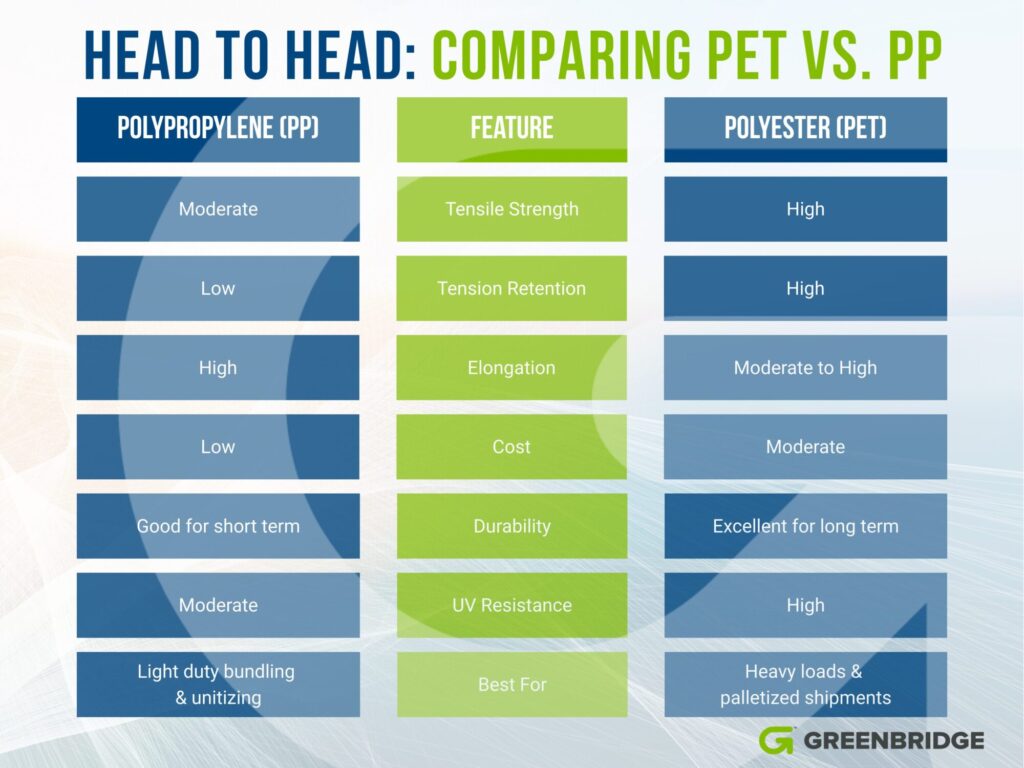
How to Choose the Right Strapping for Your Operation
Still unsure which strapping material to choose? Consider these key factors:
1. Weight of the Load
The heavier the product, the more strength you’ll need. If your load exceeds 300 lbs or involves rigid, high-pressure packaging, PET is likely your best bet.
2. Load Stability and Movement
If your shipment might shift or settle during transport, you need strapping that can recover from elongation—PET is ideal here. For stable, lightweight shipments, PP works just fine.
3. Storage & Transit Conditions
Will your product be exposed to the sun or stored outside? Polyester is more UV- and moisture-resistant, making it more durable in challenging environments.
4. Duration of Storage or Transit
Polypropylene loses tension faster than polyester. If your products are stored or shipped over long periods, PET will maintain its hold much better.
5. Application Method
Both materials work with manual tools, battery-powered strapping tools, or automatic machines—but the right match depends on your workflow. Polyester performs better in high-speed operations and auto-strapping systems due to its strength and durability.
We’ll Help You Find the Right Fit
At Greenbridge, we offer a wide range of polyester and polypropylene strapping options—all designed to deliver performance, value, and peace of mind. Whether you’re upgrading your packaging line or exploring automation, our team can help you choose the right materials and tools for your application.
